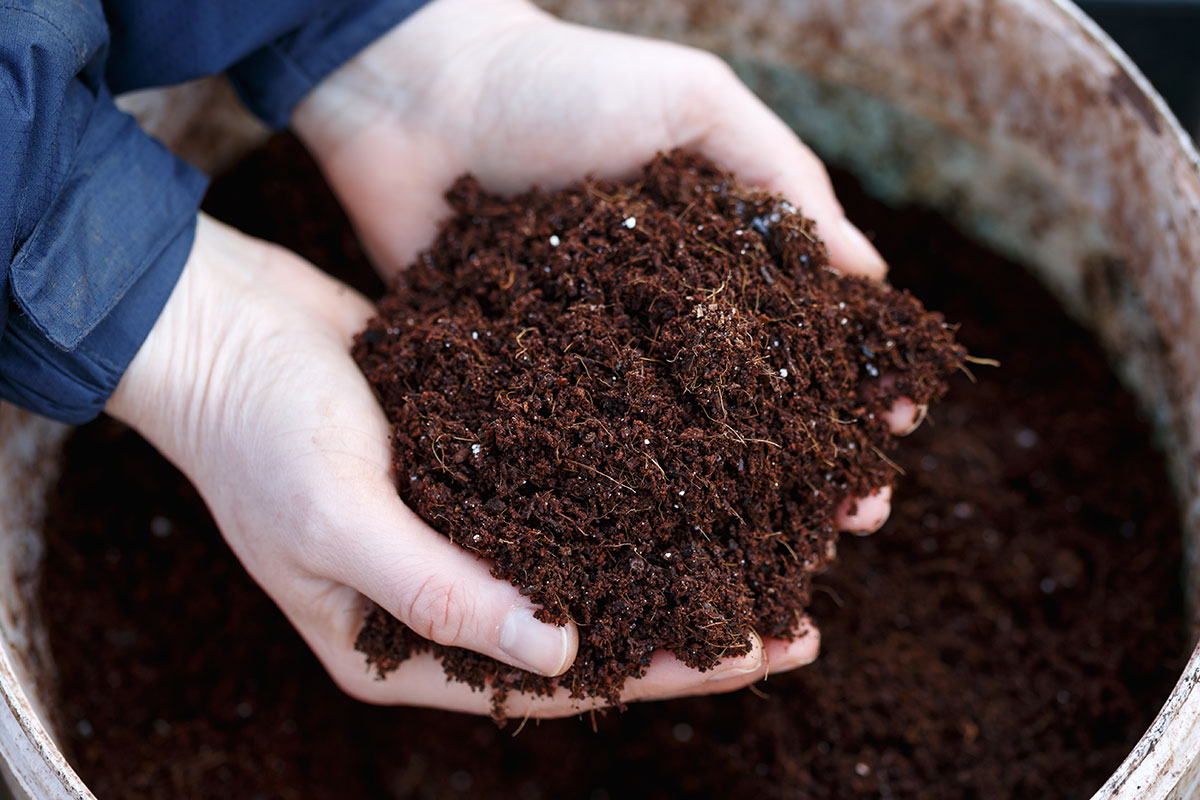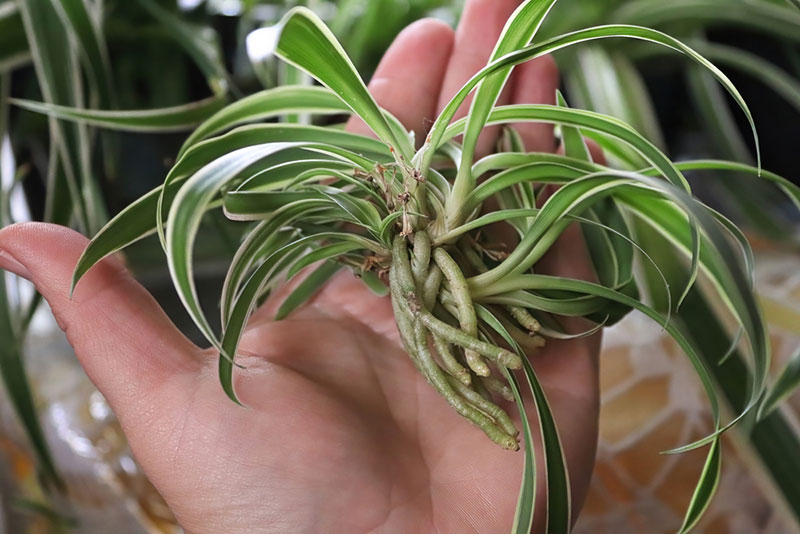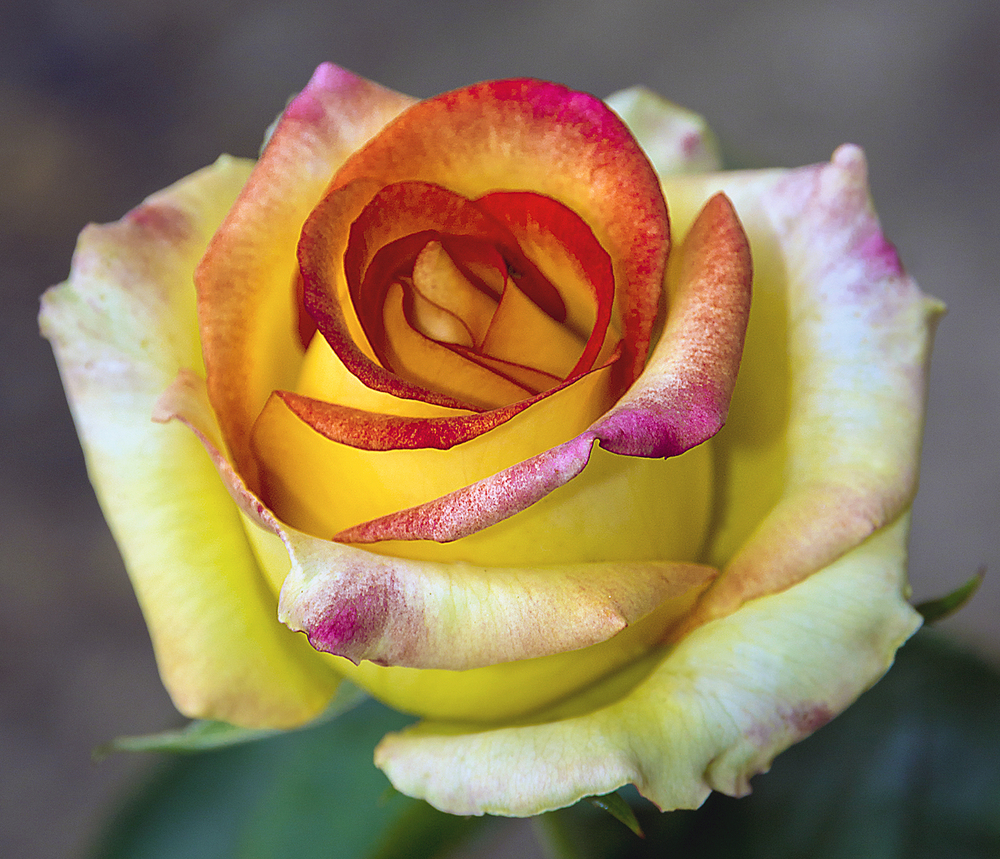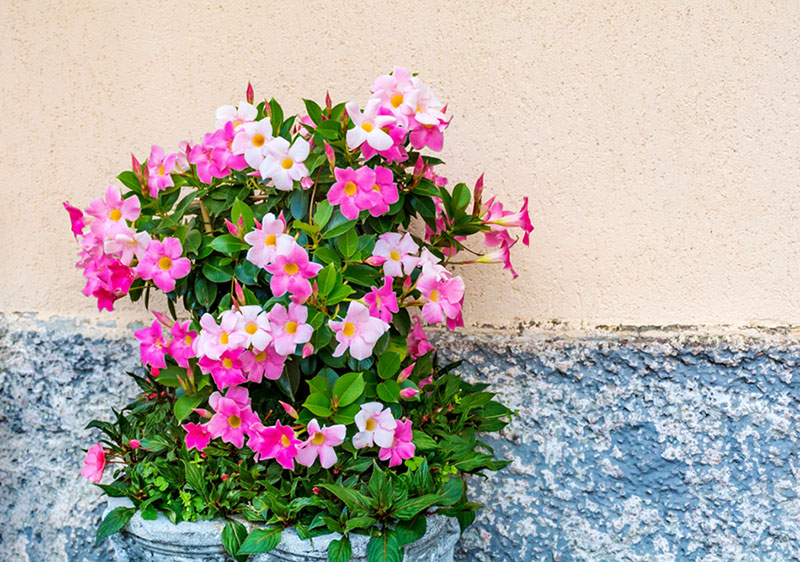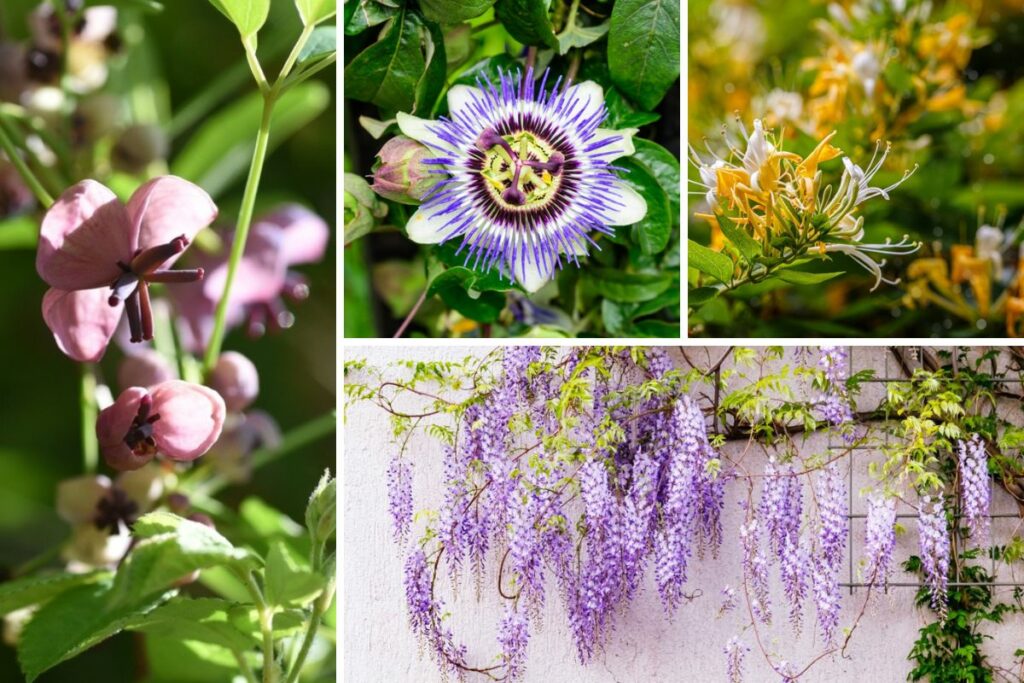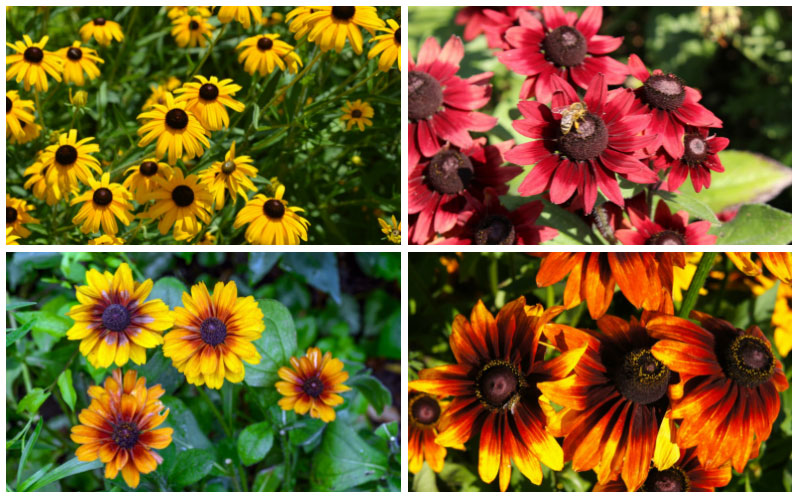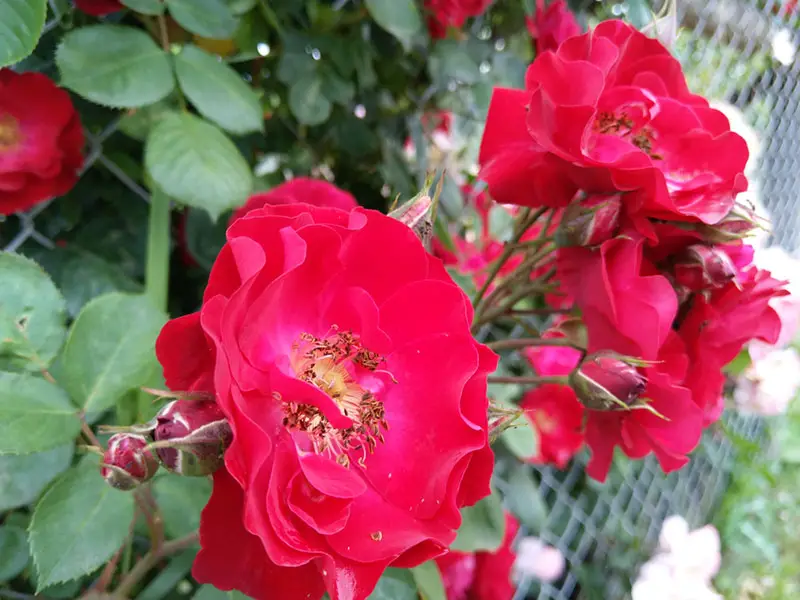
Chain link fences sometimes get a bad rap, but they can be a beautiful and practical addition to your property. There is no reason your chain link fence has to be an eyesore. There are solutions to the harsh look of a chain-link fence, like planting bushes and flowers in front of to try and hide it.
Instead of breaking your back planting bushes and bulbs every few feet, choose a plant that will naturally spread and intertwine with the fence. These types of vines and flowers are super low-maintenance and will turn your metal fence into a lush barrier for your home. Blend the functionality of the sturdy fence with the enchanting presence of vines and blooming flowers to get the best of both worlds.
Here’s a list of the best plants to cover your chain link fence with and some tips on caring for them.
Wisteria
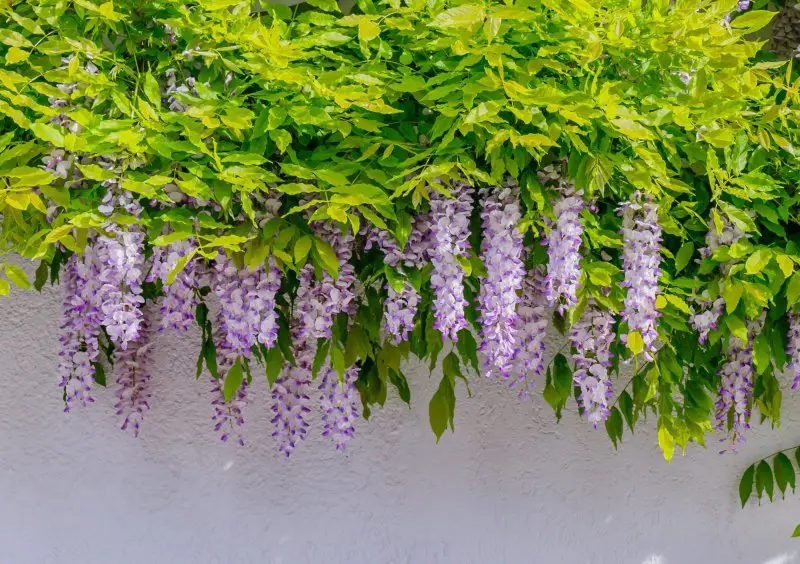
Wisteria blooms from the beginning to the end of spring in gorgeous purple and blue colors. In addition, these flowers fill the area with a lovely, perfume scent giving you another reason to opt for this plant on your chain link fence.
Wisteria isn’t the most low-maintenance option, but it provides benefits such as colors and scent. It’s best to have Wisteria on a sturdy support, like a chain-link fence, with lots of sunlight and rich soil.
Morning Glory
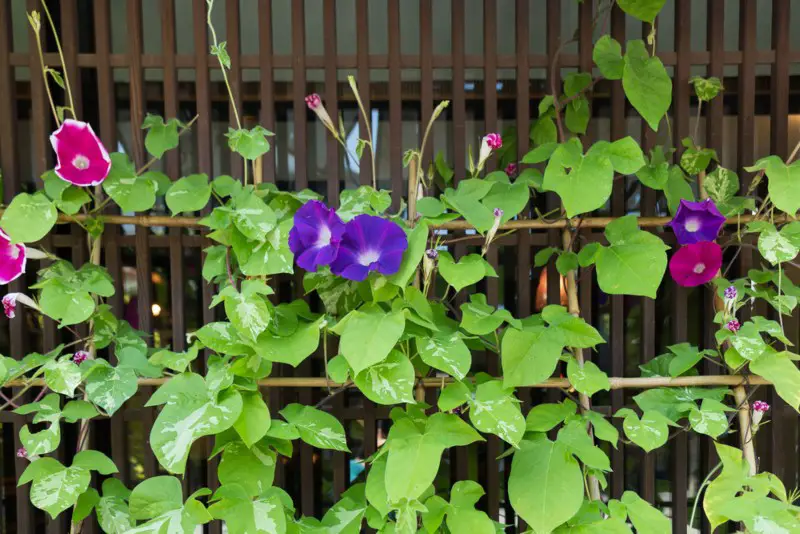
One of the most popular flowering vines, Morning Glory, is a unique funnel-shaped flower that comes in different shades of cool colors like blue, purple, and white. Most are a lovely shade of blue that brightens up any unsightly fence. They bloom in the morning and close up as the day goes on, hence their name.
Morning Glories bloom from May through September and are tough, low-maintenance plants. They require full sun like many vine plants but will take whatever soil you give them! They thrive in soil that drains well near a trellis or something they can grow on.
Boston Ivy
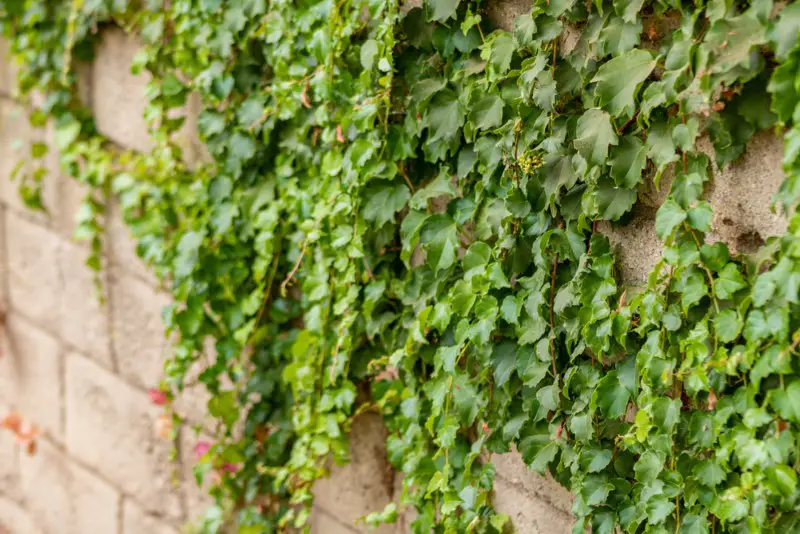
Boston Ivy is a lush, green vine that covers some buildings in Boston. This vine grows rather aggressively and can be rough on building foundations, but it’s the perfect plant to hide a chain-link fence. The leaves have a distinct shine that reflects sunlight making the leaves look even greener.
Growing Boston Ivy is super easy. The primary maintenance involves keeping it within its boundaries by trimming every few months. If not monitored, Boston Ivy can grow across more than 20 feet and grow up more than 50 feet. Other than trimming, the Ivy generally doesn’t care what soil it’s in and is fine with moderate to full sun.
English Ivy
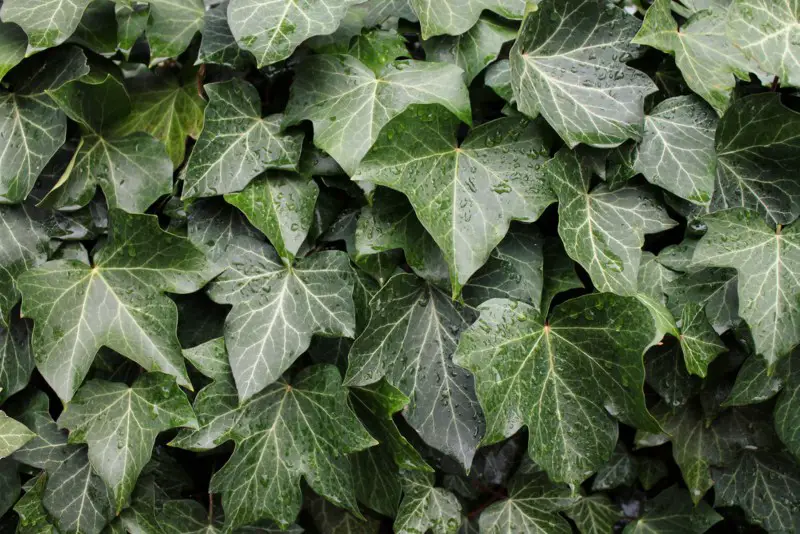
This vine is an excellent cover for your fence because it grows thick with large leaves. It grows in varying colors of green, medium-sized leaves with contrasting white veins making your yard look like a paradise.
English Ivy is simple to care for if planted in the right place. First, make sure to plant it in a cool, shady spot with moist, rich soil. After that, it doesn’t need much maintenance but will thrive on your fence.
Trumpet Vine
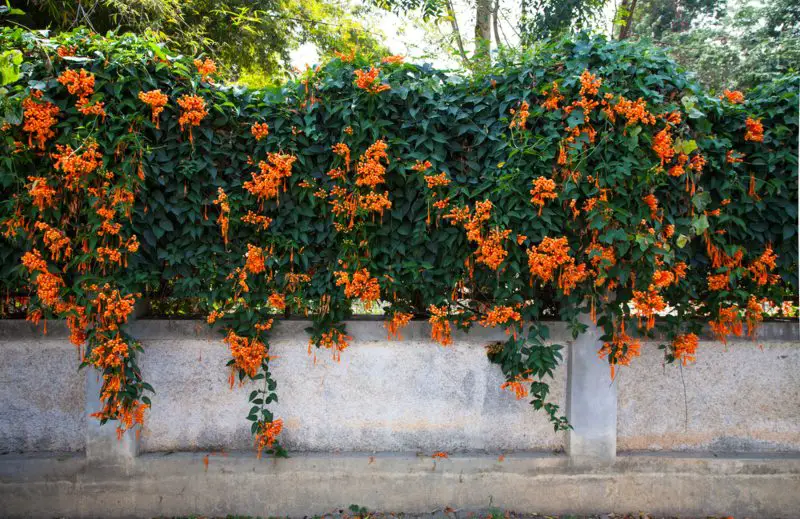
This fast-growing perennial vine has a distinct and attractive shape. No surprise, they’re shaped like trumpet horns! They come in brilliant sunset colors that liven up any garden.
They can overgrow easily and need pruning often. Other than that, the vine is resilient in conditions that aren’t ideal. However, it does require a good support structure, so a fence is a perfect place for this flower.
Honeysuckle

Honeysuckles are a vibrant, yellow flowering plant that adds life to any garden. They are beautiful but are also known for their sweet smell, tasty nectar, and ability to attract wildlife like hummingbirds, butterflies, bees, robins, blackbirds, and more, turning your yard into a buzzing sanctuary for nature.
These vines prefer full sun and well-draining soil but will tolerate imperfect conditions. It helps the plants if you prune them every so often, but it isn’t necessary if they remain within the boundaries of your fence.
Climbing Hydrangea
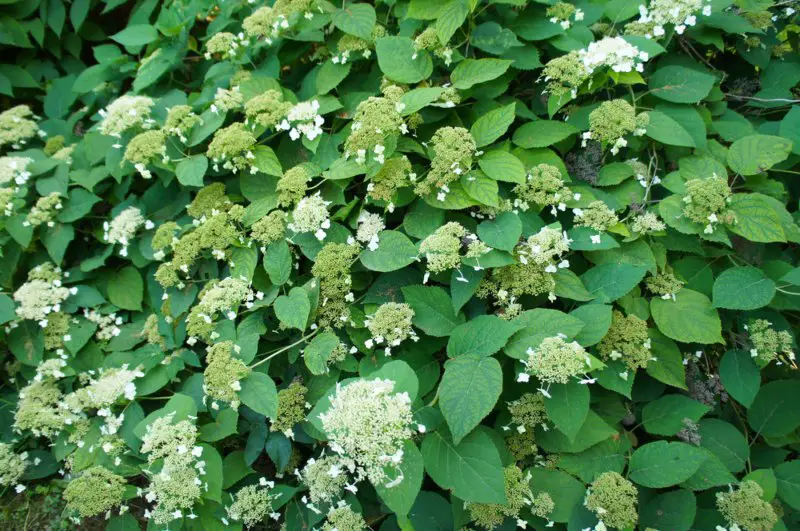
These grow green, heart-shaped leaves behind bright, white flowers creating a lovely contrast. The small flowers before fully blooming resemble baby’s breath and are enchanting when grown along a fence.
Climbing Hydrangea is a heavy, robust vine that needs sturdy support to climb up. The plant prefers warm climates with very rich soil. But it fairs well in the shade or full sun, which gives you some flexibility on where you can plant it.
Creeping Fig
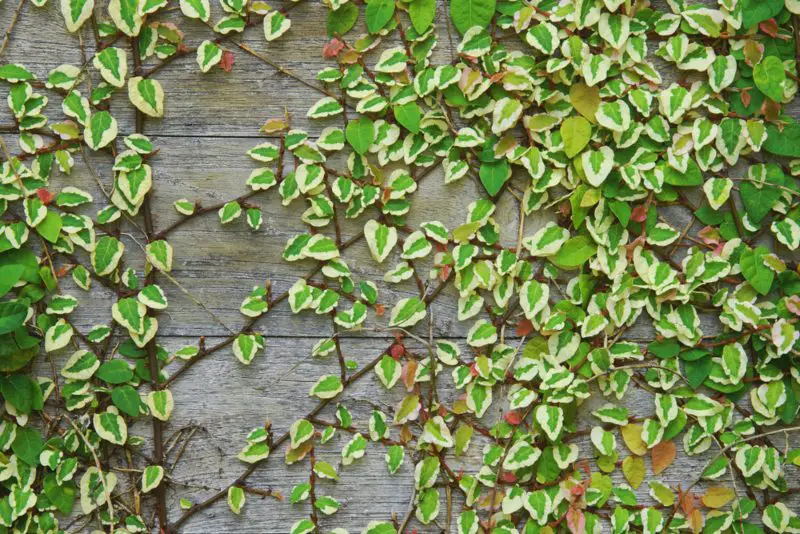
Using Creeping Fig vines to hide your chain link fence is easy and effective because they grow well and last the entire year. However, the plant prefers warmer climates, so not everyone will grow these on their fence. Also, if your area doesn’t get decent rainfall, you may need to supplement the vine’s water supply.
As the plant ages, the small leaves and twigs will begin to get rougher and woodier. To manage this, prune them every few months or even just once a year to bring them back to a desirable state.
Purple Hyacinth Bean
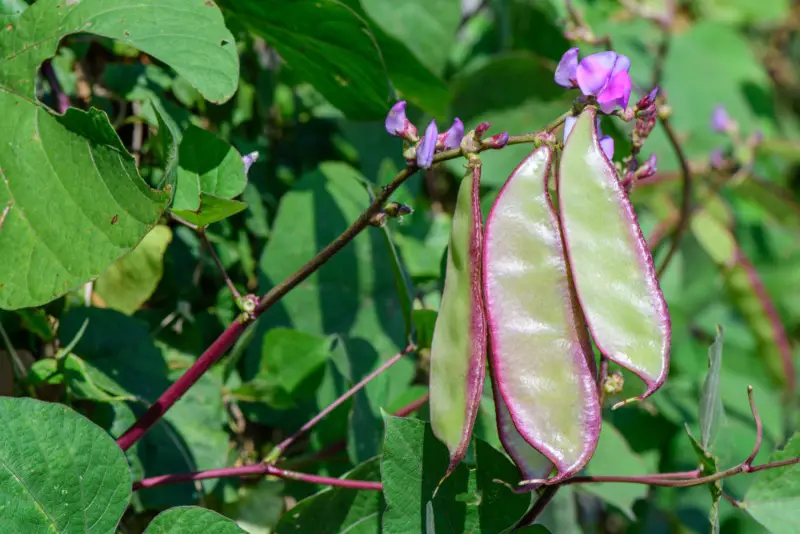
Purple Hyacinth Bean Vines are annual with vibrant purple, pinks, and reds that will make your chain link fence enchanting. Their buds are about the size of a lima bean but bring a ton of color to any garden. These will bloom right through fall, keeping your fence happy and bright even as other plants begin to wither.
Hyacinth Beans are easy to take care of because they aren’t picky about soil and just require a lot of sun and something to grow on, like a chain-link fence! The seeds should be spread just after winter passes, and there is no risk of more frost. If you are too excited to wait, you can also start the seedlings indoors a few weeks before the end of winter and then transplant them. Make sure to give transplants lots of water at first!
Passionflower

One of the most diversified flowers with 400 different species, Passionflowers are vivid and eye-catching in any garden. They come in so many different colors and sizes you can make your fence look however you want. Originating in South America and Mexico, these tropical plants don’t always fare well in the US.
Passionflowers can be finicky. To have success growing Passionflowers, you need full sun and rich, moist soil. In ideal conditions, the flowers will only bloom during warm months and can’t survive harsh winters.
Conclusion
Choosing a plant to cover a chain link fence might seem tasking. Fortunately, these plants will not only tone down the harsh look of a chain link fence but will leave your fence looking beautiful through different seasons. With a little bit of care and attention, you’ll be able to achieve the look you’re after.

